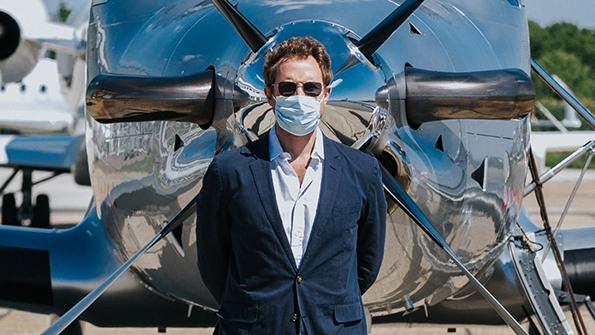
To what extent should business aviation blow its own horn as it donates resources and provides relief services in the fight against the COVID-19 pandemic? Is there a danger it could send the wrong message?
That may depend where you are located. British General Aviation Association CEO Marc Bailey spoke out recently about the politics of envy that have pervaded the UK and encouraged the popular press to rejoice in stories of largesse and excess that exist on the periphery of any luxury industry, not just business jets. See https://aviationweek.com/business-aviation/aircraft-propulsion/bbga-chief-time-bizav-tackle-politics-envy
Bailey suggests the reaction to private aviation in the UK runs counter to that typically seen in the U.S. “It’s ‘I envy what you’re doing,’ not ‘I aspire,’ like the Americans do,” he says.
So should the industry be working to polish its image, especially in Europe, in this time of crisis? There are clearly risks as well as opportunities. An industry perceived as unpopular likely will be viewed with cynicism by implacable opponents, so even the least self-serving of initiatives could, by being highlighted, only end up bringing greater hostility. But there are models that business aviation can follow as it seeks to illustrate its wider societal contribution.
“I think we as an industry would have to behave very much like the supermarkets have done,” says Adam Twidell, co-founder and CEO of British-based digital charter brokerage PrivateFly. “Clearly this is boom time for supermarkets, while many industries are in huge decline. The supermarkets have gone from strength to strength and their messaging is very much around being a service to the public, keeping employment going and much less about ‘We’re raking in the profits,’ which they are.”
Tackling the image problem head-on is certainly an option. It’s one that has been taken up by Jetfly, though not purely for corporate or public-relations (PR) related reasons.
At the start of the crisis, the Luxembourg-headquartered company, which operates a fleet of 23 Pilatus PC-12s on a fractional-ownership model, emailed its clients asking whether they would be willing to donate an hour’s flying time each to help in efforts to counter the virus. Within 24 hr., 150 hr. had been donated; the figure soon reached 200 hr. “What we then had to do was work out how we were going to use [the hours],” says Jonathan Clough, the company’s UK sales director. Contacts within the French government put Jetfly in touch with Medecins Sans Frontieres, and their aircraft soon were ferrying medical staffs around France. COVID-response flights also took place around Italy and to Corsica. One of the aircraft was taken out of its executive configuration and converted for cargo.
“In the UK, I was tasked to find missions,” Clough says, “so I employed a PR company which contacted major newspapers. We got a bit of editorial in The Times [of London] about what we were doing and kind of put out a call for help. It wasn’t as an image thing for Jetfly; it was, ‘Look, we’ve got these planes available and we want to help. Get in touch with us.’”
As a result, the company has been working with NHS Hero Support, a group set up during the pandemic by volunteers and dedicated to supplying personal protective equipment to front-line medical personnel.
“Last week we did our first mission with them,” Clough says. “We had 400 kg [880 lb.] of visors. They were dropped off at Biggin Hill Airport in London by a volunteer driver. We loaded our plane and we flew it up to Liverpool. They were in touch again yesterday to see if we can do another drop-off for them.”
When it launched the PR campaign, Jetfly was aware it could backfire, but believed the benefits outweighed the potential risks. However, Clough points out, the key reason the strategy worked was because it was genuine rather than manufactured. His advice to other companies in the sector who are considering a similar move is straightforward:
“You’ve got to come from a good place. We wanted to help. I come from a family of doctors—my father is a semi-retired neurologist; my brother is an A&E [accident and emergency] doctor on the front line. So we genuinely wanted to help, and we found a way we could do so. It wasn’t to put a spin on anything; it was because I’m worried about my 70-year-old father going back into a coronavirus hotspot. If it comes from a good place, people will see that it’s genuine and it’s not just some sort of PR exercise.”
